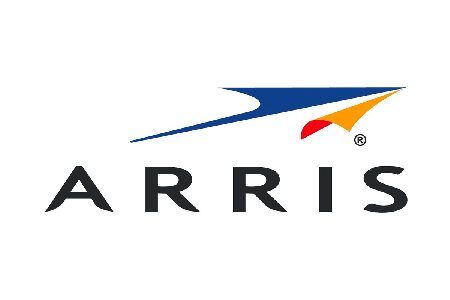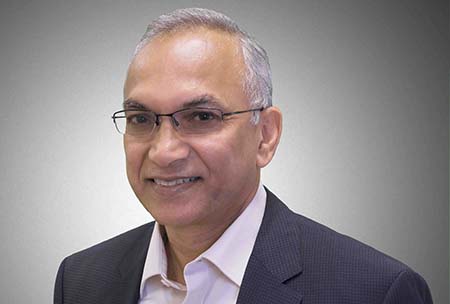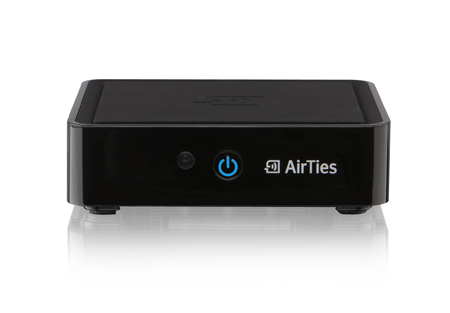The lack of audience measurement in MENA is a fundamental weakness in the satellite TV broadcast ecosystem, writes Robert Lakos as he outlines easy-to-use solutions.

A $7 set-top box has enough logging and reporting capabilities via 3G modem or QR code to offer insights into the TV viewing habits of more than 60 million MENA households, writes Robert Lakos, Founder of Deleel TV
Fifteen million satellite receiver set-top-boxes flood into the MENA market every year. They are the cheap and powerful bits of electronics that serve 90% of MENA TV viewers with their video content. These boxes know every channel watched in every household. They know when viewers zap to another channel or satellite. They know when a USB stick is attached to record an episode of a hit drama series, and they know when viewers fast-forward through advertisements on play back.
From $200 to $7 in 15 years
Satellite STBs sold in MENA in the early 2000s were surprisingly sophisticated machines. They could scan multiple satellites and had the capacity to store thousands of channels. Users could sort, filter and arrange those channels as they wished into a handful of lists. The EPG could display a two-week grid full of rich programme information. PVR models with 40GB hard disc drives offered instant replay and pause, along with automatic recording timers to give users the convenience of watching what they wanted, when they wanted, how they wanted. The STBs used to ship out of factories for $100-200, twice that for PVRs.
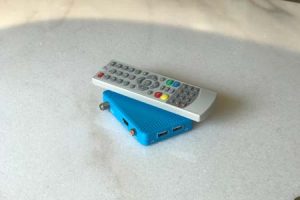
Todays average satellite receiver comes out of the factory costing around $7. Like its forebears, it too scans satellites to store thousands of channels in multiple user lists. PVR functionality now comes as standard, with storage on cheap external USB sticks that can be bought at any corner store.
Unlike computers and mobile phones, where prices and margins have stayed roughly the same for decades while consumer benefits have blossomed, the functionality of satellite STBs in MENA has stayed roughly the same while prices and margins have plummeted. That is both the best thing about satellite TV in MENA, and the worst; and it may offer the key to solving the data void of MENA and thereby unlocking a new and more prosperous era of satellite broadcasting in the region.
Price elasticity
Ipsos, Frost and Sullivan and others have released research during the past year indicating that over 90% of TV households in MENA get their TV via satellite dish and receiver. Thats approximately 55 million TV households. No other region in the world comes close.
That success is due in large part to price and convenience. Complete satellite systems including 60cm dish, LNB, cable, HD receiver and installation can be bought retail for $20-40. Finding a satellite shop and a competent installer is as predictably convenient as finding a pharmacy usually within a ten-minute walk of your building.
Point that dish at the 7°/8° West orbital position and watch hundreds of free-to-air (FTA) TV channels broadcasting the most popular content in the region. Picture quality on most channels is superb. Electricity is the households only running cost to consume as much satellite TV as they want.
The basic FTA value proposition has humbled a slew of regional pay-TV players over the years as they struggle to attract and hold on to subscribers.
Cheap hardware, good distribution, lots of free content, no bandwidth charges: that value proposition is hard to beat. In fact, that basic FTA value proposition has humbled a slew of regional pay-TV players over the years as they struggle to attract and hold on to subscribers.
Data void and advertising anemia
If MENA satellite is one of the worlds largest TV markets, it is also one of the most opaque. Whos watching what, when and where is largely a mystery.
Channels in other TV markets use audience measurement data to make decisions about content acquisition, production and scheduling. Advertisers rely on data (ratings) for their media buying decisions to connect with target markets. Simply put, detailed viewing data glues together the interests of viewers, broadcasters and advertisers, and turns FTA TV into a business which delivers content viewers want and profits channels and advertisers are looking for.
Not so in MENA, where all too often anecdote and assumption fill the void of transparent audience measurement data. Commissioned research gives us periodic glimpses into the top channels in a few key markets, but the gaps in our knowledge are vast.
We know for example that CBC from Egypt broadcasts content popular in Egypt. But CBCs broadcasts spill over to cover a further 300 million Arabic-speakers outside Egypt. How many are tuning in every evening from Sudan, Jordan, Saudi Arabia, Syria, Morocco, Yemen or all the other important markets in between? Its anybodys guess. The same can be said of hundreds of other channels coming out of the UAE, Jordan, KSA, Lebanon, Tunisia, Morocco and many other countries.
FTA satellite channels in MENA generally buy content rights to cover the full MENA region, but without easy access to detailed MENA-wide audience data they usually only monetise in their home markets. They miss out on the revenue opportunities of selling advertisements to reach their viewers in other markets.
Every click of the remote
Not all satellite TV markets are as devoid of audience data as MENA. In fact, some of the richest data in the world of television comes from satellite operators.
Back in the late 1990s, Dish Network in the US was one of the first satellite operators to realise it could get more value out of its rapidly growing population of satellite set-top boxes. Working closely with technology sister company EchoStar, it figured out that any click of the remote control and any operation of the satellite set-top box could easily be logged for analysis.
Zap from CNN to the BBC at 7:01pm, watch until 7:25pm, then tune to Fox for 10 seconds, and back again to CNN until 7:59. All of that could be registered down to the split second. Then a very small portion of those STBs activated their dial-up modems to transfer the logged data back to the central data centre. (Remember dial-up modems?)
The long tail of TV
Ratings methods and processes were developed and refined during the early years of television in the 1950s, 60s and 70s. when viewers had access to a relatively limited number of channels. With diaries and later on with people meters, companies like AC Nielson in the USA and BARB in the UK gathered, analysed and published the hard data that connected the value chains between TV channels, viewers and advertisers.
Digital compression changed TV dramatically in the 1990s. Squeezing a handful of digital channels into the bandwidth of a single analogue channel made it possible to deliver channels to viewers at a small fraction of what it used to cost. In many markets, this drove explosive growth in the number of TV channels. Dish and other pay-TV operators in the US and Europe added dozens of channels a year, and by the mid-2000s many operators carried over a thousand channels. Similarly, in MENA the channel count mushroomed from a few dozen in the early 1990s to well over a thousand.
But while the traditional ratings companies had always focused on the top channels, now there was a need to monitor the popularity of the many hundreds of channels that made up the very long tail of a digital satellite TV channel list. Thats where the capabilities of satellite STBs dovetailed nicely with the huge subscriber volume of the pay-TV giants to bring high-quality data to channels far down the tail.
While news headlines trumpeted the ratings success of top TV shows like Friends and Survivor, pay-TV operators needed to evaluate the popularity of channels addressing niche markets. In an ethnic programming package with for example a handful of Urdu-language channels and a few tens of thousands of subscribers in North America, which channels were most watched and which were hardly watched at all?
Detailed data enables operators to make better business decisions … it also enables advertisers to create business cases to buy advertising on niche channels with limited penetration.
STB data helps answer those questions. Detailed data enables operators to make better business decisions in acquiring rights for new channels and creating packages which better correspond to what viewers want to watch. It also enables advertisers to create business cases to buy advertising on niche channels with limited penetration.
STB phone home
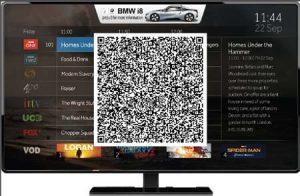
Dial-up modems were the normal way for satellite STBs in a pay-TV environment to deliver data back to the operator. Call charges were paid by the operator and done in the wee hours of the morning to avoid tying up the home landline. During the past decade, broadband connections proliferated and made it easier and cheaper to collect data from more and more STBs.
In developing markets, pay-TV operators have innovated other techniques to gather data where broadband penetration is low. One solution is to select households which agree to supply viewing data and attach a 3G dongle modem to the STB. Alternatively, the STB can generate a QR code summarising key viewing parameters. Viewers are then incentivised to take a picture of the QR codes with their phone and submit via SMS or WhatsApp.
Switching on the lights with a $7 STB
The lack of audience measurement in MENA is a fundamental weakness in the satellite TV broadcast ecosystem. It has a negatively impact on the ability of channels to provide all their viewers with the best TV experience, and makes it impossible for channels to earn advertising revenues that correspond to their full viewership.
This problem is hardly unique to MENA. But with more than 60 million TV households, it would be hard to find a larger TV market where less is known about the viewing behaviour of the vast majority. This lack of effective audience measurement is boilerplate preamble, referenced regularly by speakers and panellists in MENA TV industry forums. The problem is well-known, significant and seemingly immune to the attention of traditional audience measurement companies, but can be resolved with a new STB-based approach which builds on the technologies and processes explored many years ago by satellite pay-TV companies.
Todays $7 satellite STBs are capable of logging all actions of the STB and reporting back via either 3G modem or QR code.
Todays satellite STB in MENA may come out of the factory at bargain basement prices, but technical capability in terms of processor power and memory easily surpasses the specs of the early 2000s. Todays $7 satellite STBs are capable of logging all actions of the STB and reporting back via either 3G modem or QR code.
While this is certainly no replacement for the rigorous research processes of international audience measurement companies, it at least starts to shine some light into markets that have not benefited from regular viewer research. It is a first step to strengthening the broadcasting ecosystem in MENA to better connect the value chain between viewers, content suppliers and advertisers.










































































